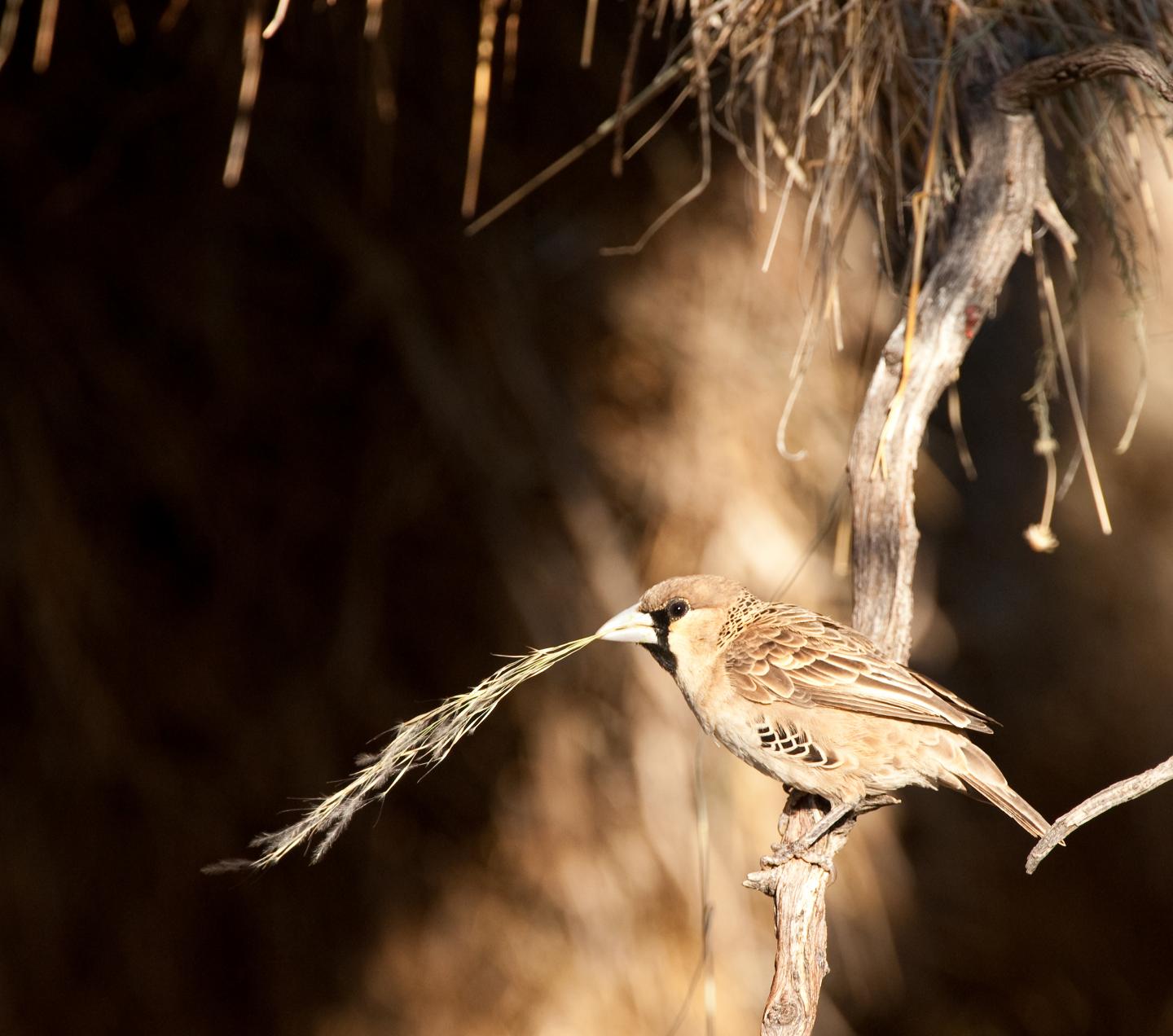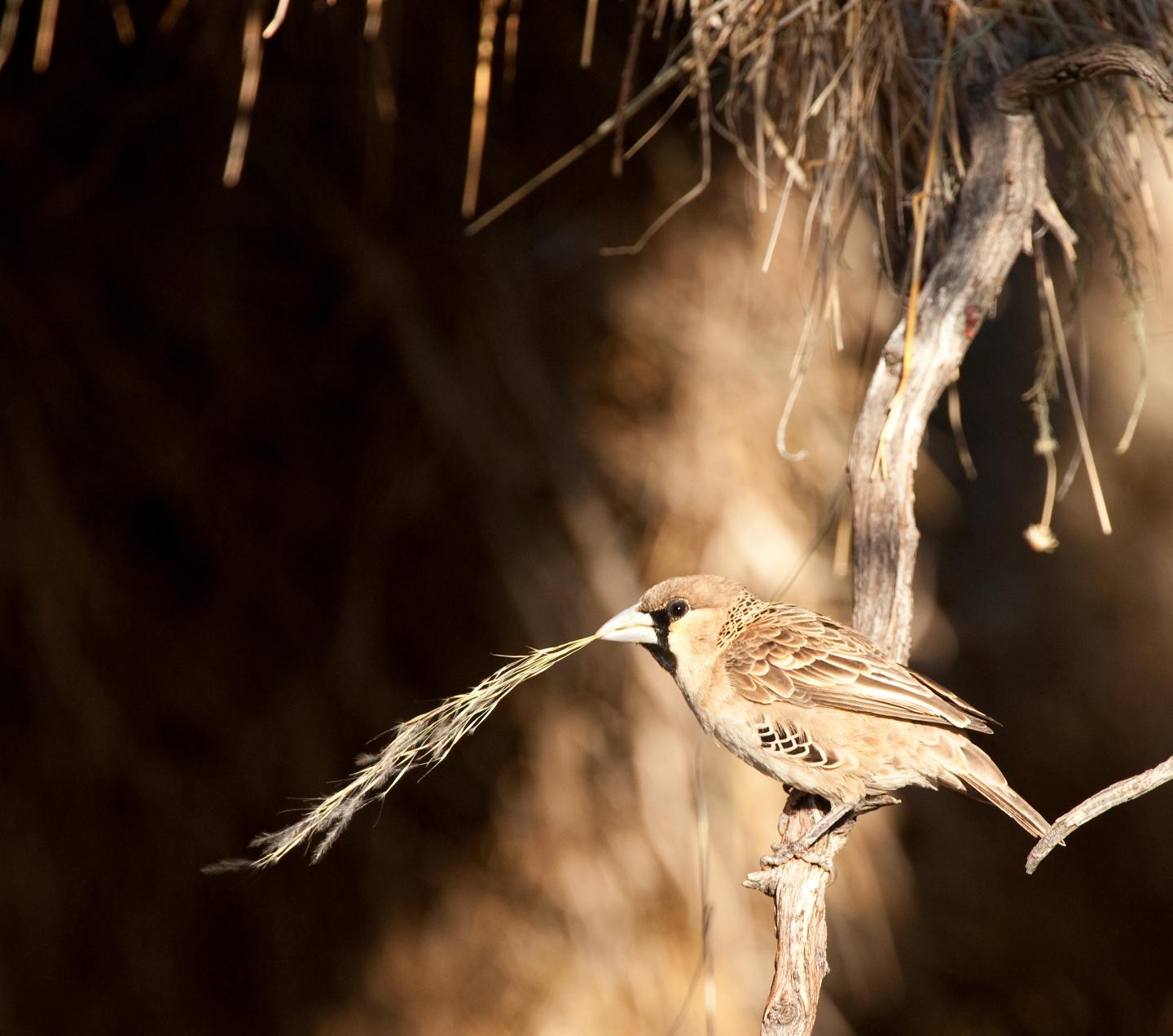
Credit: Jessie Walton
Cooperatively breeding birds and fish may have evolved the adaptive ability to reduce the size of their eggs when helpers are available to lighten the parental load, a new study suggests. The findings indicate that in some species, the social environment may influence female reproductive decisions even prior to the birth of offspring.
According to the research from the University of Cambridge, females in species such as the sociable weaver, superb fairy-wren and daffodil cichlid fish, tend to produce smaller eggs when help with rearing offspring is at hand compared to when parents are on their own.
The authors of the paper, which was published today in the journal PeerJ, looked at data from 12 studies on 10 species of cooperatively breeding vertebrates in order to analyse the relationship between the number of helpers present and egg size. The reduction in egg size in relation to helper availability was stronger in species where mothers also reduce the energy they put into post-natal care when other members of the social group are available to help protect, incubate and feed offspring after laying.
The findings suggest that breeding females, by laying smaller, less energy-consuming eggs and providing less food to offspring at the nest, may conserve energy to increase their own chances of survival to the next year or to have the next set of offspring sooner. If helpers compensate for the reduced investment into the current offspring, this could lead to females producing more offspring in total over the course of their lifetimes.
Tanmay Dixit, lead author of the paper who carried out the study for his third-year dissertation while studying for an undergraduate degree in Natural Sciences at St John's College, Cambridge, said: "While this paper does not provide conclusive evidence as it is based on a small sample of studies and species, it suggests that it is at least possible that the females of certain cooperatively breeding species may be able to adapt their reproductive decisions to changes in the social environment by reducing investment in current broods to prioritise future survival and reproduction."
The researchers were also testing the alternative hypothesis that mothers might increase their investment in their offspring to make the most of the good conditions brought about by more helpers, but it appears that the overall trend in such conditions is towards mothers limiting current investment in favour of future investment.
The results can offer an explanation as to why helpers often appear to have little impact on offspring success in many species: it is mothers, rather than their offspring, who seem to reap the benefits from the presence of helpers, whose assistance with rearing young replaces maternal effort rather than adding to it.
Further research is now needed to confirm whether individual females are able to alter the size of offspring they produce when there are more or fewer helpers available to them.
"We are still lacking an understanding of the extent to which social cues can influence females to adjust their reproductive investment prior to egg laying or whether their reproductive investment is primarily dependent on their own condition," added Dixit. "For example, groups might be larger when females are older and have previously produced many offspring, which could also limit the size of eggs they are now producing.
"It would also be interesting to explore the impact on egg size of other environmental conditions such as climate and the quality of mates. Little is also known about the mechanisms that may allow species to 'choose' to reduce the size of their eggs in these species, so there are many fertile areas for research stemming from these findings."
###
'The relationship between egg size and helper number in cooperative breeders: a meta-analysis across species' is reported in the journal PeerJ.
Media Contact
Shelley Hughes
[email protected]
07-793-002-064
@stjohnscam
http://www.joh.cam.ac.uk/
Original Source
http://dx.doi.org/10.7717/peerj.4028 http://dx.doi.org/10.7717/peerj.4028





